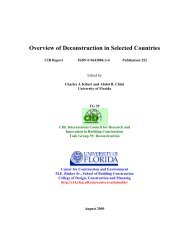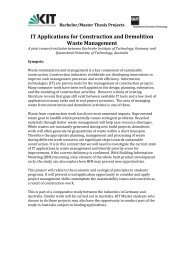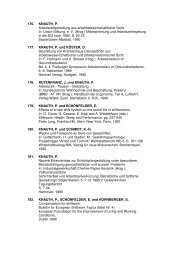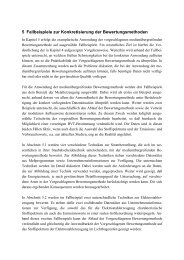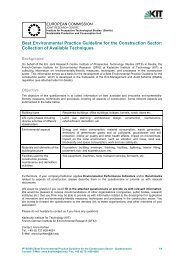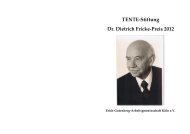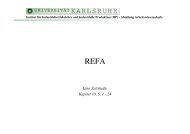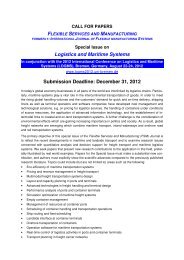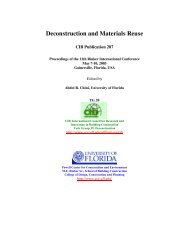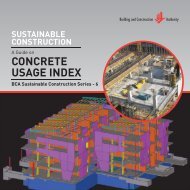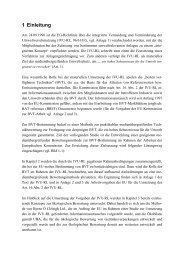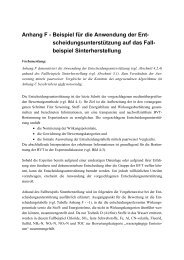Waste reduction final report -4 - Test Input
Waste reduction final report -4 - Test Input
Waste reduction final report -4 - Test Input
Create successful ePaper yourself
Turn your PDF publications into a flip-book with our unique Google optimized e-Paper software.
• Credit 1.1 Building Reuse—Maintain Existing Walls, Floors and Roof 1-3<br />
• Credit 1.2 Building Reuse—Maintain Existing Interior Nonstructural Elements 1<br />
• Credit 2 Construction <strong>Waste</strong> Management 1-2<br />
• Credit 3 Materials Reuse 1-2<br />
• Credit 4 Recycled Content 1-2<br />
• Credit 5 Regional Materials 1-2<br />
• Credit 6 Rapidly Renewable Materials 1<br />
• Credit 7 Certified Wood 1<br />
14. U.S. Green Building Council’s LEED rating system can be upgraded. The standards<br />
should focus on even greater emphasis on reuse. The standards could be further<br />
strengthened by prioritizing reuse over recycling. It could offer more points for reuse.<br />
Currently LEED-NC offers just one point for reusing building materials. Moreover,<br />
the reuse section of the LEED standards for new construction and major renovations<br />
could be strengthened to include a percentage of reused materials above the current 5<br />
to 10 percent. Additionally, USGBC can be an important partner in providing<br />
information and resources on reuse.<br />
15. New building should be designed for disassembly and modular construction. For<br />
example: “According to Boston Consulting Group (2008), modular construction can<br />
reduce waste by 25 percent or more. In modular construction, building components<br />
are assembled off-site resulting in reduced waste in the construction process due to<br />
building to standard sizes, increasing recycling and reuse, reducing packaging and<br />
designing for deconstruction”.<br />
(SOURCE: http://www.uic.edu/depts/ovcr/iesp/research/delta<strong>report</strong>.pdf, VISITED ON 10/08/2009)<br />
16. Sales tax exemptions should be provided for recycling equipment i.e. on-site grinding<br />
equipment and recycled construction materials.<br />
(SOURCE: http://www.recyclecddebris.com/rCDd/Handbook, VISITED ON 10/08/2009)<br />
17. State and Local government should fund various research projects working on C&D<br />
waste issues and opportunities.<br />
“Examples of C&D materials management projects funded at the state level:<br />
• In 2002, the South Central Iowa Solid <strong>Waste</strong> Agency received a grant/loan from the<br />
Iowa Department of Natural Resources for construction of an Environmental<br />
Education Center. This project included the use of "green" construction materials and<br />
practices, as well as a study on construction waste to determine the composition of the<br />
waste generated and to assess the quantity potentially diverted from the landfill.<br />
• In 2004, the North Carolina Division of Pollution Prevention and Environmental<br />
Assistance (DPPEA) awarded $25,000 to New Hanover County to implement a C&D<br />
debris recycling program at the county’s landfill.<br />
• The State of Hawaii Department of Business, Economic Development and Tourism<br />
provided funding to two construction operations on Maui—the Pukalani Golf Estates<br />
and the Front Street Affordable Housing Project—to track the production and disposal<br />
140



